6 tips for choosing a sandwich panel for roofs and walls
The advent of sandwich panels made possible the very rapid construction of buildings. Today, thanks to wall and roofing panels, not only warehouses, pavilions, terminals and other industrial structures are being built, but also private houses. Such widespread sandwich panels are required many advantages: speed and ease of installation, ease of construction, aesthetics and economy of the material, excellent heat and sound insulation qualities. The constantly growing demand for material has led to an increase in the assortment, and today without preparation it is possible to determine only the color, and more than 600 shades are represented. But here how to choose a sandwich panel with the right type of insulation, suitable thickness and profile?
No. 1. Sandwich Panel Production Technology
Sandwich panel - This is a multilayer material consisting of a layer of insulation, covered on both sides by metal or PVC. Its quality depends not only on the raw materials used, but also on the production method. Sandwich panels at the moment are made in such ways:
 assembly of individual elements in the immediate vicinity of the construction site where steel sheets, insulation and glue are brought. The process is convenient, but in the end, panels with not the best performance are obtained;
assembly of individual elements in the immediate vicinity of the construction site where steel sheets, insulation and glue are brought. The process is convenient, but in the end, panels with not the best performance are obtained;- foaming method consists in filling the cavity between two sheets of steel with polyurethane foam, which foams under pressure. If the insulation will flow unevenly, but cavities will form that violate the thermal insulation;
- conveyor method - the most perfect and thorough, it allows you to create sandwich panels with the best performance. When choosing, it is worth paying attention to products manufactured in this way. There are not so many domestic companies working on this technology, one of them is the Nelidovsky Roofing Plant.
No. 2. Type of facing material
As a facing material can be used steel sheets, plastic, drywall or OSB panels. Naturally, metal sheets the most durable, their thickness varies from 0.5 to 0.7 mm, and performance is largely dependent on type and thickness of anti-corrosion coating. Usually steel sheets galvanized, and the thicker the zinc layer, the more durable the panels will be. Alternatively used aluzinc coating (galvalyuma), which was specially designed to protect sandwich panels and perfectly resists the effects of atmospheric moisture and sunlight.
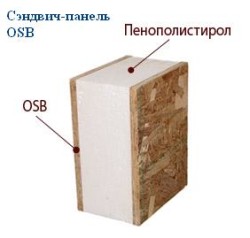 Also used galvanized coating (an alloy of zinc, aluminum, lanthanum and cerium), which, with a smaller thickness, surpasses the zinc coating in ductility and resistance to mechanical damage. Often panels are also coated with polymer over a layer of protective alloy. Thus, an improvement in weather resistance is achieved.
Also used galvanized coating (an alloy of zinc, aluminum, lanthanum and cerium), which, with a smaller thickness, surpasses the zinc coating in ductility and resistance to mechanical damage. Often panels are also coated with polymer over a layer of protective alloy. Thus, an improvement in weather resistance is achieved.
Drywall allows you to get lighter sandwich panels, but you can only use them for mounting internal partitions. OSB panels (oriented particle boards) - basis Sip panels, which also includes insulation polystyrene foam. The structural features of OSB-plates allow you to reliably hold fasteners, thereby increasing the strength of the finished structure.Such sandwich panels are used to equip ceilings, walls and roofs.
No. 3. Type of insulation
The insulation layer can vary in thickness from 5 to 30 cm, moreover, sandwich panels with a thickness of more than 15 cm are mainly used in the arrangement of refrigeration chambers. As a heater, materials such as:
- mineral wool;
- polystyrene;
- polyurethane foam.
All of them differ in a certain set of advantages and disadvantages. So, mineral wool does not support combustion and is environmentally friendly, in such insulation rodents will not live. Of the minuses, it is worth highlighting hygroscopicity, therefore, the tightness of the finished structure must be given great attention, because when absorbing moisture, the thermal insulation properties deteriorate. Nevertheless, it is mineral wool that is most often used today by domestic manufacturers in the manufacture of sandwich panels.
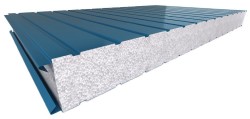 Polystyrene - durable moisture-proof material with high thermal insulation properties. It is subject to the negative effects of sunlight, but thanks to the sheathing of steel sheets this disadvantage can be avoided. Polystyrene burns easily, releasing toxic substances, rodents can live in it.
Polystyrene - durable moisture-proof material with high thermal insulation properties. It is subject to the negative effects of sunlight, but thanks to the sheathing of steel sheets this disadvantage can be avoided. Polystyrene burns easily, releasing toxic substances, rodents can live in it.
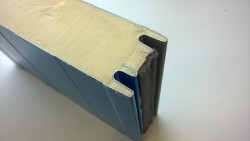 Polyurethane foam is in great demand in a number of European countries, as it has a minimum of flaws with a huge number of advantages, for which he is so loved in European countries. Among the advantages of the material, it is worth highlighting resistance to moisture: even if water seeps into the insulation, it will not cause any negative consequences. This type of insulation is very light, which simplifies the transportation of panels, their installation, reduces the load on the foundation. The main advantage is low thermal conductivity, 2 times lower than mineral wool, and 1.5 times lower than polystyrene. Polyisocyanurate, a type of polyurethane foam, has the properties of self-extinguishing, and today it is more and more often used as a heater for sandwich panels. In addition, the insulation will not become a place of development fungus and mold. Among the minuses, it is worth highlighting the possibility of damage by rodents.
Polyurethane foam is in great demand in a number of European countries, as it has a minimum of flaws with a huge number of advantages, for which he is so loved in European countries. Among the advantages of the material, it is worth highlighting resistance to moisture: even if water seeps into the insulation, it will not cause any negative consequences. This type of insulation is very light, which simplifies the transportation of panels, their installation, reduces the load on the foundation. The main advantage is low thermal conductivity, 2 times lower than mineral wool, and 1.5 times lower than polystyrene. Polyisocyanurate, a type of polyurethane foam, has the properties of self-extinguishing, and today it is more and more often used as a heater for sandwich panels. In addition, the insulation will not become a place of development fungus and mold. Among the minuses, it is worth highlighting the possibility of damage by rodents.
Number 4. What is the difference between roofing and wall sandwich panels?
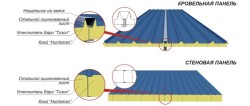 The basic principle of installing wall and roof sandwich panels is the same, but still there are some differences in the design that make it preferable to use one panel for wall constructionsand others are roofs.
The basic principle of installing wall and roof sandwich panels is the same, but still there are some differences in the design that make it preferable to use one panel for wall constructionsand others are roofs.
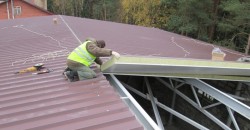 The first difference is the steel sheet profile. For the construction of walls, smooth sheets or profiled under a log are used, sidingmicrowaves. Roofing panels have a high profile for greater strength and stability, so that the roof in winter can handle the heavy weight of snow. Sheets of steel can be profiled on both sides for even greater stability. Also for roofing panels insulation of higher density is used.
The first difference is the steel sheet profile. For the construction of walls, smooth sheets or profiled under a log are used, sidingmicrowaves. Roofing panels have a high profile for greater strength and stability, so that the roof in winter can handle the heavy weight of snow. Sheets of steel can be profiled on both sides for even greater stability. Also for roofing panels insulation of higher density is used.
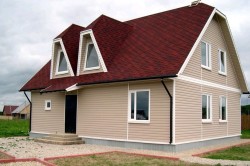 Another difference is the type of lockwhich panels connect. Roofing sandwich panels are distinguished by a more complex lock, which is necessary in order to overcome the pressure of the atmosphere and precipitation. Also roof panels are distinguished by an even thicker anti-corrosion layerthan wall panels.
Another difference is the type of lockwhich panels connect. Roofing sandwich panels are distinguished by a more complex lock, which is necessary in order to overcome the pressure of the atmosphere and precipitation. Also roof panels are distinguished by an even thicker anti-corrosion layerthan wall panels.
No. 5. Required parameters for sandwich panels
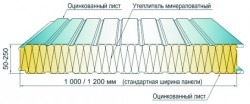 For walling sandwich panels with a width of 1.1 and 1.5 m are used, but the length can vary widely - from 2 to 18.5 m, so that you can easily and simply build a building with any necessary parameters. Width roofing sandwich panels, as a rule, is 1 m, length - from 1 to 16 m. In addition, it is important to remember that when installing roof panels it is necessary to adhere to a slope of 7 degrees.
For walling sandwich panels with a width of 1.1 and 1.5 m are used, but the length can vary widely - from 2 to 18.5 m, so that you can easily and simply build a building with any necessary parameters. Width roofing sandwich panels, as a rule, is 1 m, length - from 1 to 16 m. In addition, it is important to remember that when installing roof panels it is necessary to adhere to a slope of 7 degrees.
If everything is more or less clear with the length and width, and their choice depends on the parameters of the building that needs to be built, then selection of panel thickness - This is a more responsible process. This parameter is calculated on the basis of the heat engineering calculation: it is labor-intensive, but not the most complex, and many factors must be taken into account.The calculation method is easy to find on the Internet, and even easier - use a special calculation calculator or seek help from specialists.
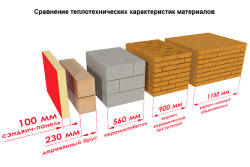 When choosing a panel thickness, you must take into account the purpose of the building, the planned internal temperature, climatic features of the region, thermal conductivity coefficient, etc. For example, if the building is located in the Moscow region, and the temperature inside it is planned at +180C, then the thickness of wall panels with mineral wool insulation should be 15 cm, with expanded polystyrene insulation - 12 cm. Under similar conditions, the thickness of roofing sandwich panels with mineral wool insulation will be 25 cm, with expanded polystyrene insulation - 18 cm.
When choosing a panel thickness, you must take into account the purpose of the building, the planned internal temperature, climatic features of the region, thermal conductivity coefficient, etc. For example, if the building is located in the Moscow region, and the temperature inside it is planned at +180C, then the thickness of wall panels with mineral wool insulation should be 15 cm, with expanded polystyrene insulation - 12 cm. Under similar conditions, the thickness of roofing sandwich panels with mineral wool insulation will be 25 cm, with expanded polystyrene insulation - 18 cm.
When choosing the required thickness, it is also important take into account the costs of space heating. So, with a greater thickness of the panels, heating costs will be reduced, but construction will also cost more, but these expenses will pay off for the first 2-3 heating seasons.
No. 6. The appearance of the sandwich panels
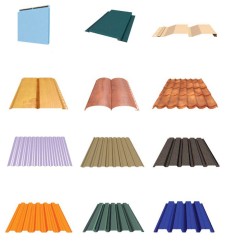 Among the more than 600 shades that are possible in the manufacture of sandwich panels, everyone will be able to choose the one that best meets the requirements. Moreover, in addition to material with a smooth surface, today appeared rough texture panelsthat mimic the surface of wood or stone, and this takes the appearance of buildings constructed in this way to a new level. As for the geometry of the panels, the necessary height and shape of the ridges and other elements can be selected by specialists, taking into account the gaps, outlets, undercuts, adjacencies of the sandwich panels.
Among the more than 600 shades that are possible in the manufacture of sandwich panels, everyone will be able to choose the one that best meets the requirements. Moreover, in addition to material with a smooth surface, today appeared rough texture panelsthat mimic the surface of wood or stone, and this takes the appearance of buildings constructed in this way to a new level. As for the geometry of the panels, the necessary height and shape of the ridges and other elements can be selected by specialists, taking into account the gaps, outlets, undercuts, adjacencies of the sandwich panels.

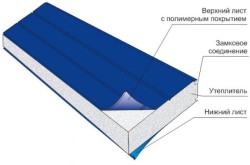

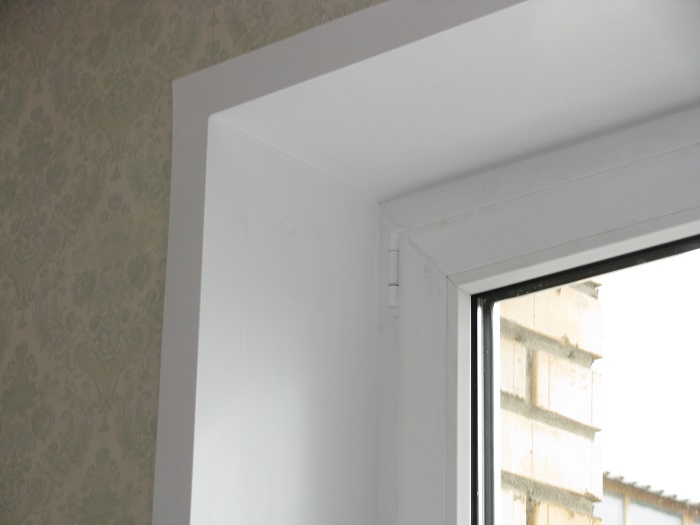
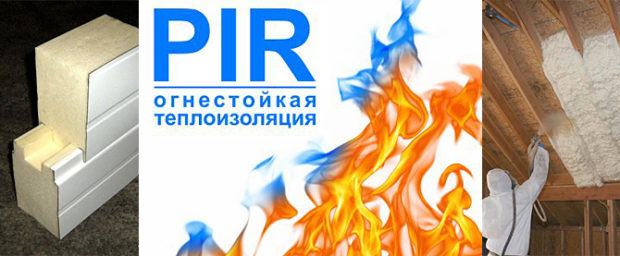
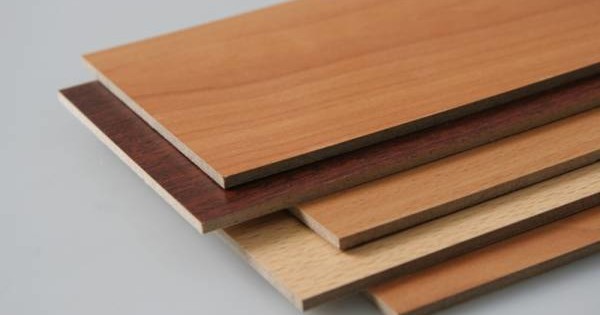
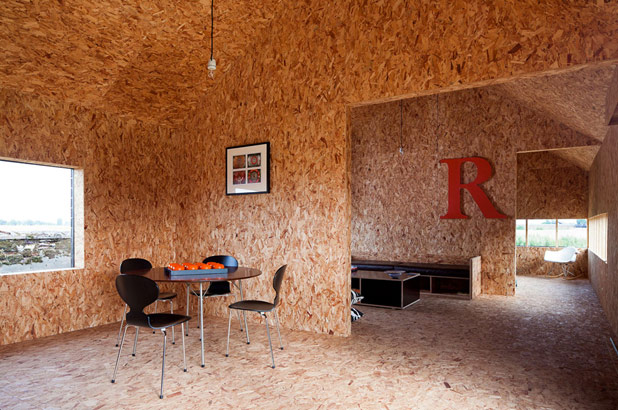
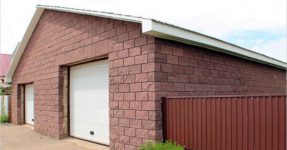
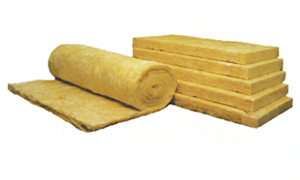
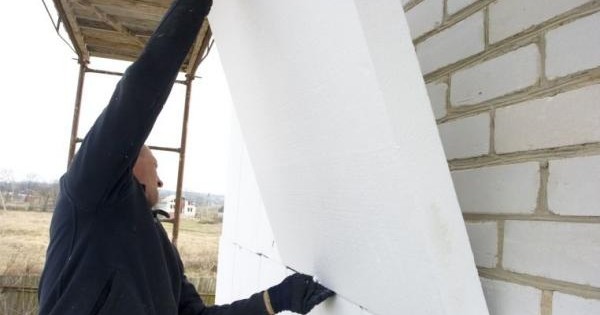
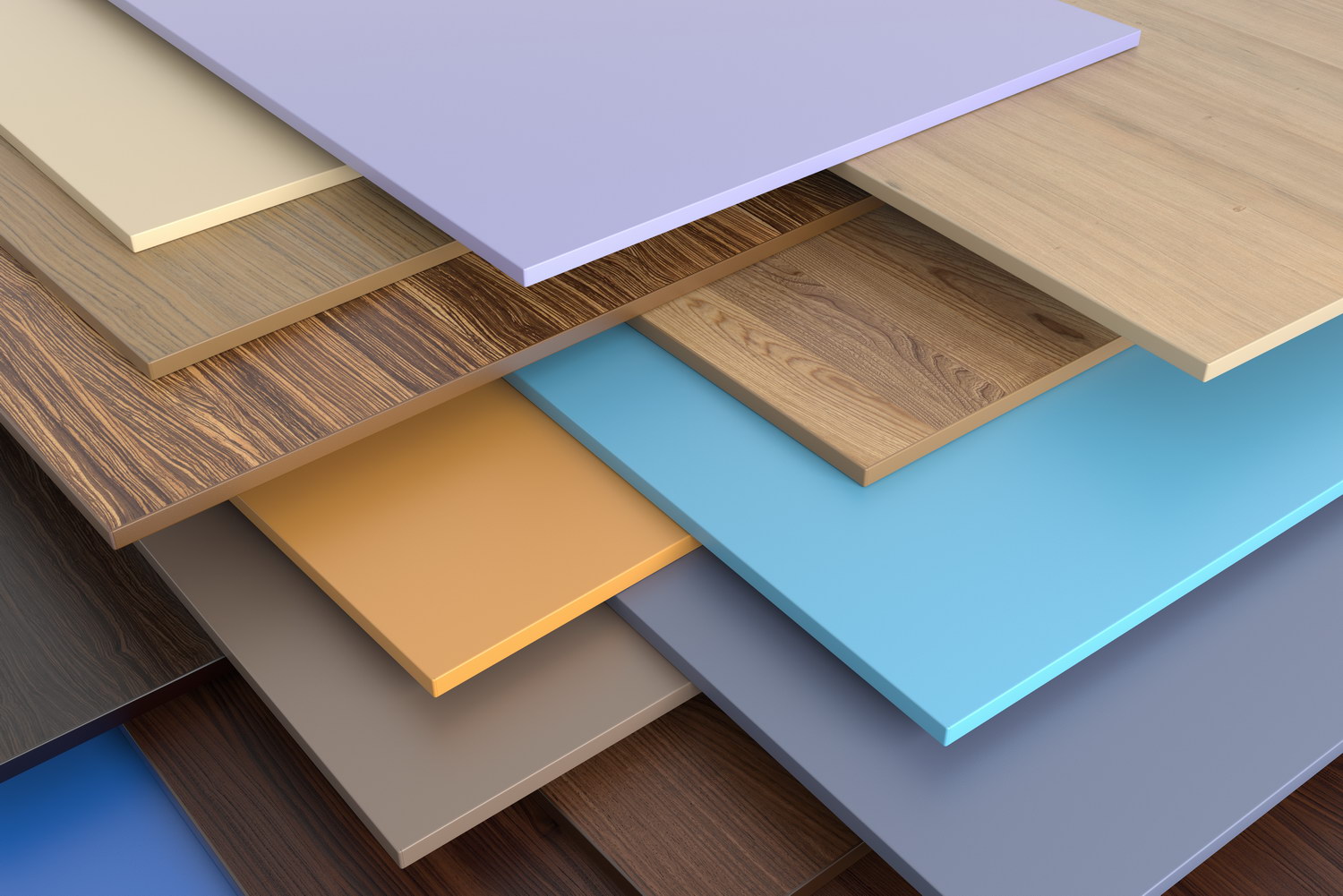

I do not really understand the essence: the differences between roofing and wall sandwich panels